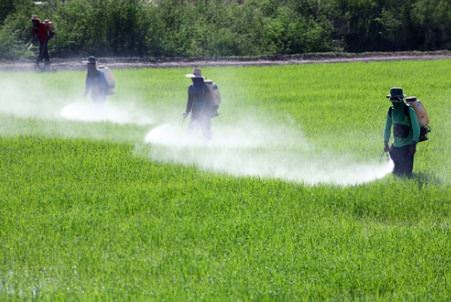Effects of Methoxychlor Felt for Generations
![]()
In the 1970s, methoxychlor was seen as a safer alternative to the pesticide DDT and was used extensively as a replacement. However, methoxychlor was banned in the U.S. in 2003 due to a variety of negative health effects. A recent study from Washington State University explained that the effects of methoxychlor may be felt by the grandchildren of those who came in contact with the chemical compound.
WSU researchers concluded that methoxychlor exposure could lead to ovarian disease, obesity and kidney disease in later generations following a study done on rats. Published in the PLOS ONE and funded by the National Institutes of Health, the researchers used methoxychlor with pregnant rats and saw higher rates of these medical conditions in the next three generations of offspring. It is called transgenerational epigenetic inheritance.
Lead researcher, WSU professor and founder of its Center for Reproductive Biology, Michael Skinner explained that this could have a significant impact on many Americans – present and future – because a number of adults have been exposed to methoxychlor at some point in their lives. The impact of this may still yet to be seen.
"What your great-grandmother was exposed to during pregnancy, like the pesticide methoxychlor, may promote a dramatic increase in your susceptibility to develop disease, and you will pass this on to your grandchildren in the absence of any continued exposures," Skinner said in a release.
What is methoxychlor?
Methoxychlor is a man-made organic halogen chemical compound used as an insecticide. Although similar in function, methoxychlor does not accumulate in the fatty tissue of animals as DDT did. Methoxychlor is also known by commercial names such as Marlate, Metox, Moxie, Chemform, Methoxo, and the chemical name 1.1.1-Trichloro-2.2-bis[p-methoxyphenyl]ethane. Molecularly written as C16H15Cl3O2, methoxychlor is a yellowish powder that has a sweet, fruity scent.
This pesticide is used on flies, mosquitoes, cockroaches, chiggers and other pests. It kills insects through consumption or contact. Methoxychlor has been used on a number of crops, trees and other plants including fruit and vegetables. Additionally, it was registered for use against parasites with cattle, animal feed, pets and home gardens.
How did it get into people's systems?
The WSU study is significant for many Americans because methoxychlor was so widely used that accidental consumption was possible. The Environmental Protection Agency explained that people can be exposed to methoxychlor through breathing the chemical in or eating contaminated food.
The people most at risk were those who worked in laboratories or factories where methoxychlor was manufactured or used. There are also possibly high levels of methoxychlor on farms, or in the soil and water near farms. Consumers who used the insecticide on their home garden or pets would also be at risk. The EPA put 0.005 milligrams per day as the maximum allowed for safe consumption of methoxychlor.
When mixed for use, methoxychlor has 88 percent purity. This makes standards testing of methoxychlor critical to ensure safe usage of the pesticide. Using the product in the correct way is also important, as contamination of food or water can happen easily at such high purity numbers. Pollution of water and air by methoxychlor has been a serious concern since it was used in the 1970s.
In a World Health Organization study of methoxychlor, it was found that the chemical persisted in the water near farms that used the pesticide.
"Although methoxychlor is poorly soluble in water, it has been found in surface water, groundwater and drinking-water. Only 1 out of 71 groundwater samples from rural areas contained methoxychlor at 0.09 µg/litre, but concentrations of up to 50 µg/litre were detected in both surface water and groundwater close to agricultural areas where it was applied. Drinking-water in two rural areas in the USA was reported to contain methoxychlor at concentrations of up to 312 µg/litre (mean 33 ng/litre) and 100 µg/litre (mean 23 ng/litre), respectively," the report explained.
WSU's study sheds a light on the long-term effects of this now-banned insecticide, and underscores the importance of safety when using this chemical to avoid serious health concerns.
CONTACT US
Tel: +44 (0) 151 649 4000
Email: marketing@greyhoundchrom.com
FOLLOW US
YOU MAY ALSO BE INTERESTED IN OUR NEWSLETTER
















